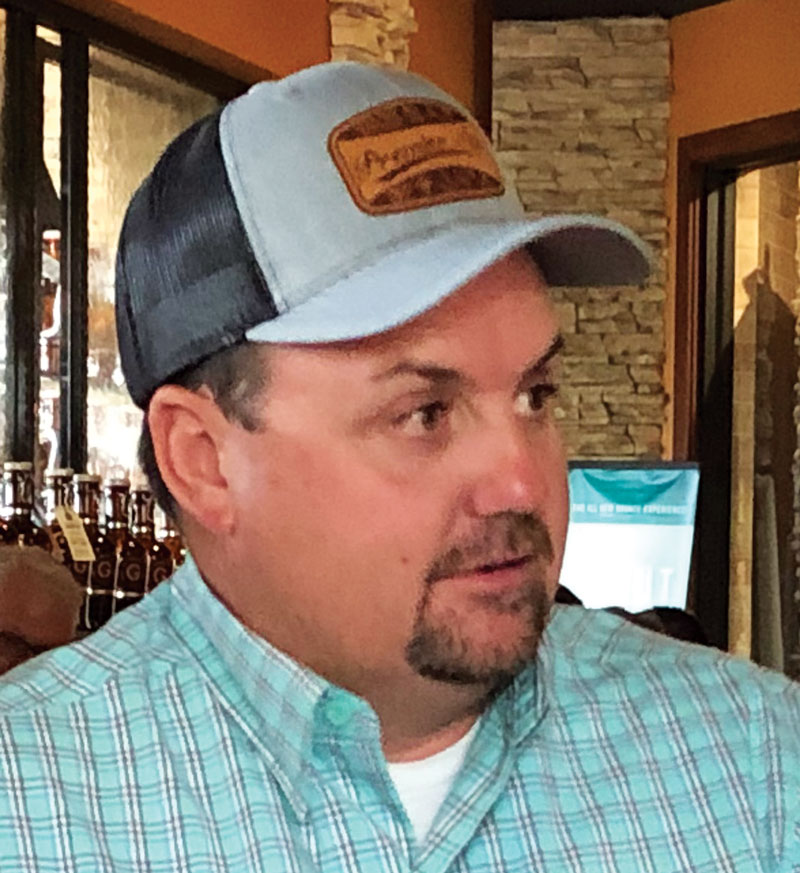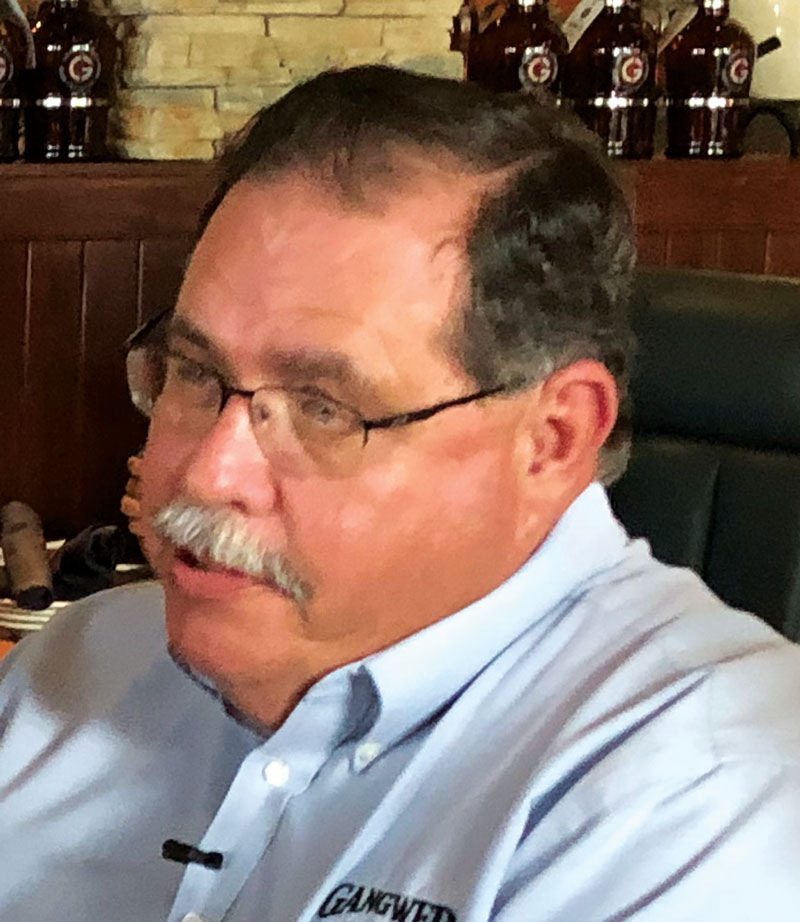Strip-tilling combines precision tillage technology and efficient nutrient management to achieve operation goals, whether those are yield-based or soil health-centric.
But what does that systematic approach entail on a day-to-day or even year-to-year basis? Strip-Till Farmer editors assembled a diverse group of strip-tillers who are on the cutting edge of the practice to find out what they think is on the horizon and how their strip-tilling strategies have evolved over the years.
At the table were Gary Gangwer, Lafayette, Ind., Rock Katschnig, Prophetstown, Ill., and Rob Boyle, Coolidge, Ariz. Here are some of the highlights from the conversation.
Strip-Till Farmer: What are you all seeing as some of the high points or game changers within your strip-till system?
Gary Gangwer: I row cultivate, band spray and sidedress. With RTK, it’s wonderful to cultivate. I was able to disturb the soil, cut it up, not clog, and then I just ran a serrated coulter in the planter, and sliced through the residue. Beautiful seed depth. You talk about residue, it’s just another time you can incorporate the residue one more time to go into it, you can throw a little bit of a ridge. What were we lacking 40 years ago? The technology to follow the same strip. We had strip-till 40 years ago, but it didn’t catch on. Now that we have the technology, we need to work smart.
Rock Katschnig: We’ve got a lot of marginal soils and sand. We have about 3,700 acres. We started out in fall of 2014 and had a local fertilizer plant custom apply fertilizer on 250 acres on marginal ground to give strip-till a try.
For so many years, we broadcast our fertilizer on top with our floater, but we’ve got so much problem with wind erosion, we had to leave residue, we had stratification of our nutrients, and the nutrients weren’t getting down to the root zone where we needed them. So, we tried strip-till, the results were amazing since day one.
From a yield standpoint, that’s been a plus. It’s just a dream in the spring, to plant into that beautiful seedbed, your moisture is consistent, we’re not fighting residue, that’s a plus. Another thing that was huge for us is that there used to be 2 guys working the ground ahead of the planter. Now, we’re not wearing out the bearings and all the things that go on tillage tools.
Rob Boyle: Strip-till is kind of new to our area. I’ve been doing it about 7 years. I’m kind of out there, in the dark, by myself. We do corn, sorghum, forage crops. We can do 3 crops a year. We try to keep something alive in the ground all the time. I was 20-inch corn before I went to strip-till, because I liked how it canopied.

“I think strip-till without fertilizer placement — you’re just spinning your wheels. It’s like building a house plant. I put everything in that pot that the house plant needs and get it off to a good start.…”— Rob Boyle
But 20-inch strip-till just didn’t work in my environment, so we went to 30 inch rows, but my yields suffered a bit. So, we went to twin-row, and I never moved my strip. I figured if I fixed my ground, I’m just going to keep farming the piece I fixed the year before. Now, I’m getting so much root mass in that strip that I have to move over.
My farm is overall pretty sandy. I was addicted to rippers with 45-inch shanks where we’d pulverize the ground into such fine particles that the it would seal over and nothing would grow anymore. We’re seeing the ground get softer and softer, and it goes against everyone’s opinion in our area that the only way to make ground soft is with tillage.
STF: How are you managing your nutrients in your strip-till system?
Gangwer: I had one field I stripped, put the phosphorus (P) and potassium (K) down, and was still chunky, so we ran the vertical-tillage unit over it, and with RTK. I knew right where the fertilizer was, and it was beautiful. It was night and day difference.
We’re thinking ahead of soybeans of throwing a little bit of pell lime in. Even 50 pounds per acre of pell lime per acre in that zone, my agronomist feels I’ll triple my investment. I don’t want my pH to be out of balance. If we put all our nutrients in a zone, are we going to get that zone a little bit out of balance? Nitrogen (N) drains your pH. It’s like Rolaids. I did learn not to include urea in the blend, because it will turn to jello in a heartbeat.
Katschnig: On soybeans, we can stay on that row and pick up that N from the plant. But we want to leave that root ball there to shade the ground and preserve moisture. We’ll plant between it. We take a lot of hog manure — and we’re not in a watershed — so we’re lucky in that respect. We’re buying straight potash off the river terminal. We’re shopping around for fertilizer and saving a lot of money.
Boyle: I think strip-till without fertilizer placement — you’re just spinning your wheels. It’s like building a house plant. I put everything in that pot that the house plant needs and get it off to a good start. Put all the base minerals and trace minerals in there, and I know it’s exactly where it needs to be.
We’ve had some problems with micronutrients getting hot and gumming up our equipment. We’re trying boron, manganese and I apply 100 pounds per acre of Tiger 90 sulfur. I have a high pH, so I’m putting sulfur in the strip every year, trying to get my pH down. We went away from blowing it in the ground at a 90-degree angle because we were getting air pockets, so if we didn’t get that strip compacted enough, that fertilizer would be laying in a little tunnel.
If we water it, it starts gassing off. The corner would hit that, and it would look like crap for 2 weeks, and then it would get below it again and do better. Now we have one where we just blow it behind the shank, and it disperses it more equally throughout the strip.
STF: What’s one of the main challenges faced by strip-tillers today?
Gangwer: It’s hard when you send somebody else out there to strip-till, and you get the machine set up, and they just don’t understand. There are drivers and there are operators. As an employer, you have to discern who’s a driver and who’s an operator. The whole concept of farming is to critique where you just went and see if you can do that next pass better. You see a problem, solve it.

“It’s hard when you send somebody else out there to strip-till, and you get the machine set up, and they just don’t understand. There are drivers and there are operators...” — Gary Gangwer
I think there’s more guys who do a lot of recreational farming, or farm for the eye. It looks pretty all nice and smooth out there. I don’t think a lot of guys are thinking it through. We still have too many drivers out there and not operators.
Katschnig: The days of having every single tool in your shed might not be here after 2019. If you want to cut some corners on expensive tillage equipment, there’s a lot of ways to do that. Hire a custom applicator to do that for you. You own a tractor, a planter, a sprayer, combine — you can really cut your investment. After 2019, that’s going to be a very popular subject. That’s going to be the trend of the future — less equipment in your shed, keeping your costs low, and that’s going to be in popular demand from your lender in keeping your investment dollars low.
Boyle: You do have to learn how to farm ugly. I was always about pristine, I wanted my crops as uniform as can be. I had 2 triticale fields in 2019. One had cereal rye, clover, vetch, mustard, like 7 different things in it with the triticale. It yielded about 2 tons more, made better quality feed, everything. All my neighbors came by and asked, ‘What are you doing?’
I sold it to some neighbors, and they said they didn’t want anything with a turnip in it. I said that’s fine. Here’s a test of 2 different piles of feed — which one do you want? The higher testing was the one that had the turnips in it. We didn’t harvest the turnips, we just took the tops. It was just the blend that made everything so much better. There’s a complete perception.
STF: How big of a role do cover crops play in your strip-till system?
Gangwer: My landlords like the fact that there’s something out there. We look at the microbial action, the extra root growth. We need more roots in our field. For the younger farmer, you’ve got to look at this. I have some landlords asking me if I want more acreage. I picked up another 120 acres and I wasn’t even soliciting because the landlords like what I’m doing with the soil. I tell younger farmers to look at strip-till.
Katschnig: The only place we’re using cover crops is on our marginal sand when we put soybeans on there and there’s not enough residue on there, so we went in there and spread wheat. Took off and grew and got us where we needed to be. We got cover to keep the sand from blowing.
We saw the value, in our sandy soils, of leaving that cover on there to hold that moisture, keep that soil cooler. A guy used the example of walking across a bare sand beach when it’s 105 degrees if that beach has grass cover on it. When you get those pounding rains, that residue will soak in.
Boyle: I’ve noticed that it’s not always the next crop that I see the benefit in, it’s 2-3 further down. Seeing way better color in the corn. My best crop comes after alfalfa, so I was trying not to have 3 years of corn on corn on corn, where my yields always diminished. I was trying to put a legume between those corn crops. Triticale is the carrier; it pays for the rye. I throw the vetch, peas, mustard and turnips — all these different things in. It just keeps getting better. I’d have no worries about doing a 10-15 way mix and then selling it as a forage product to a dairy






